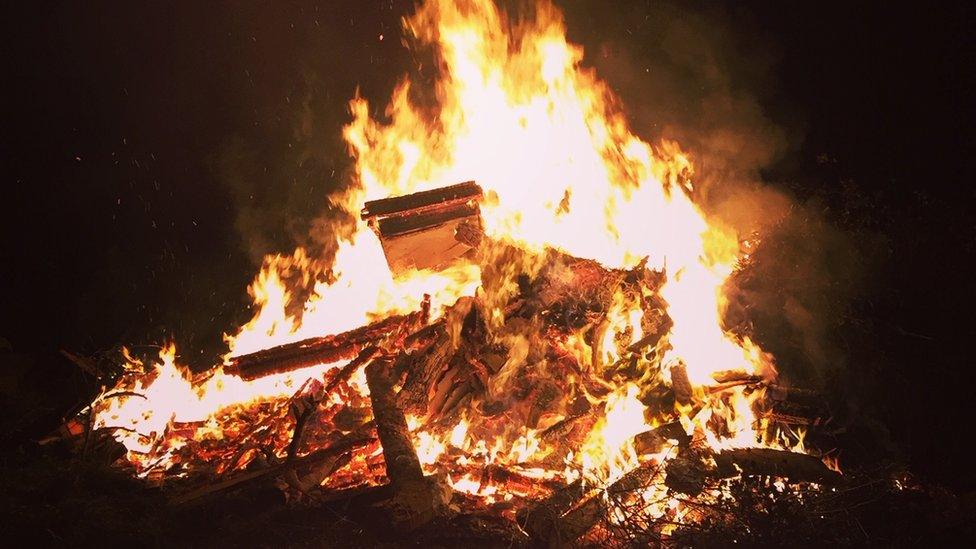Dispersal zone plan for Bonfire Night in Edinburgh
- Published

Police could use riot equipment and set up strict dispersal zones if there is trouble during this year's Bonfire Night events in Edinburgh.
Last year emergency services had 250 calls about "dangerous use of fireworks and antisocial behaviour".
Fireworks were hurled by youths, causing an injury to a police sergeant.
This year, officers will be able to remove people from dispersal zones and arrest those suspected of committing an offence without a warrant.
The City of Edinburgh Council has drawn up plans aimed at helping police officers minimise antisocial behaviour this November.
In a letter, chief superintendent Gareth Blair highlighted the measures that will be at officers' disposal this year as the force prepares for next month's celebrations.
He said: "Our deployment will be phased, graduated and proportionate to the threats and risk encountered. We will use all lawful means to deter, detect and disrupt those intent on disorder including the deployment of specially trained officers and the use of dispersal powers.
"Where necessary and for their own safety, the use of additional personal protective equipment may be authorised in respect of these officers. It should be stressed that these officers will only be deployed if proportionate and justified."
From Friday 2 November until Tuesday 6 November "significant additional conventional resources will be deployed" by Police Scotland.
Additional protective equipment could include protective headgear and boots, body cameras, CS spray, taser and firearms - depending on the required response.
Firearms would only be considered if members of the public were confirmed to have weapons and presenting a risk to the general public, themselves, or police officers.
Dispersal zones could be put in place in hotspots from 14:00 and midnight between Friday 2 November and Tuesday 6 November.
In these zones, officers will have the right to force troublemakers to leave, stop those who do not live in the zone from returning to it for up to 24 hours and arrest without warrant any person reasonably suspected to have committed or be committing offences.
'Capability, equipment and readiness'
Last year, a bonfire in Craingentinny was gatecrashed by hooded youngsters - armed with rucksacks full of fireworks.
In nearby Loganlea, youths reportedly fought in the streets and let off fireworks at families' homes.
A car was driven into a bonfire next to a playground outside Craigentinny Primary School and two more cars were set alight nearby.
John McLellan, councillor covering the Craigentinny ward, said: "I think it's a really good response from the police.
"I think it reflects what the community demanded in the wake of last year's incidents.
"The primary concern last year was the police weren't equipped to act in a way the community wanted once trouble started. It looks like the police will have the capability, equipment and readiness to intervene if trouble arises."
Ch Insp David Robertson, of Police Scotland, said: "Under the powers granted by the Anti-Social Behaviour (Scotland) Act 2004 following superintendent's authority, we will have the option to enforce dispersal zones within specific areas and times under the act.
"Consultation has taken place with local authority partners and the Procurator Fiscals Service regarding the use of dispersal zones, which is yet another tactic at our disposal to deal with antisocial behaviour; not just during Bonfire Night, but all year round."
Story by local democracy reporter David Bol